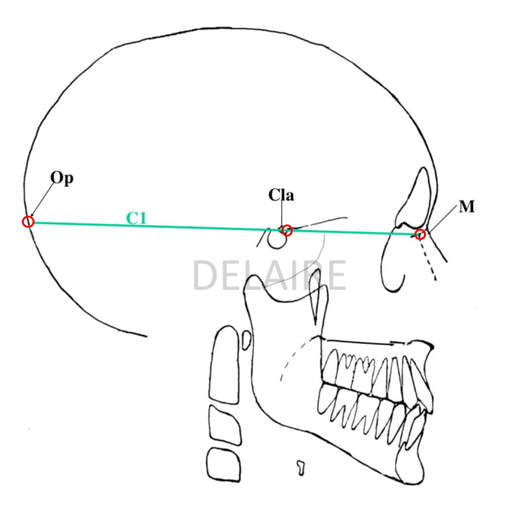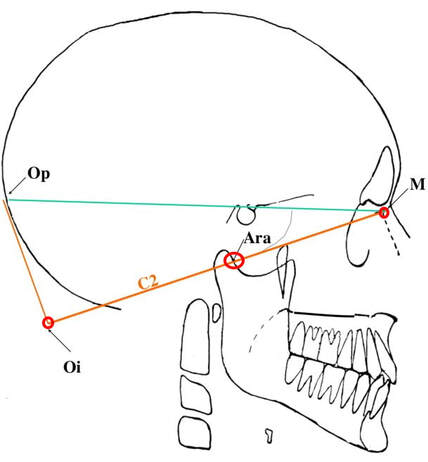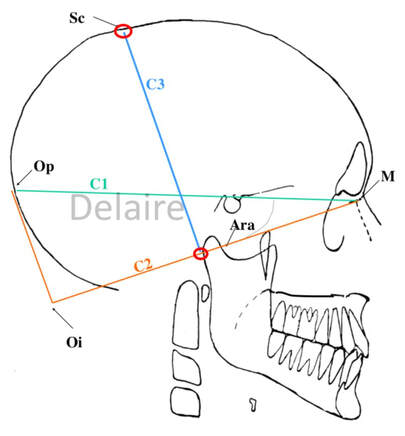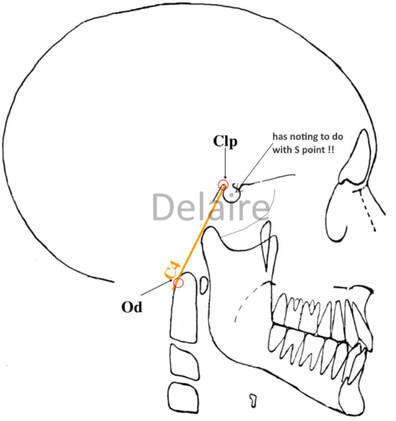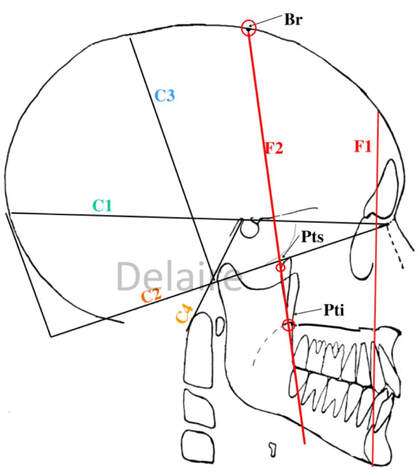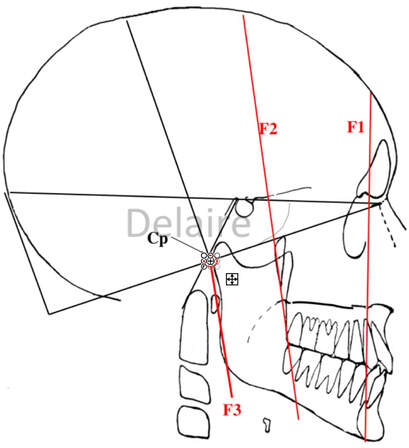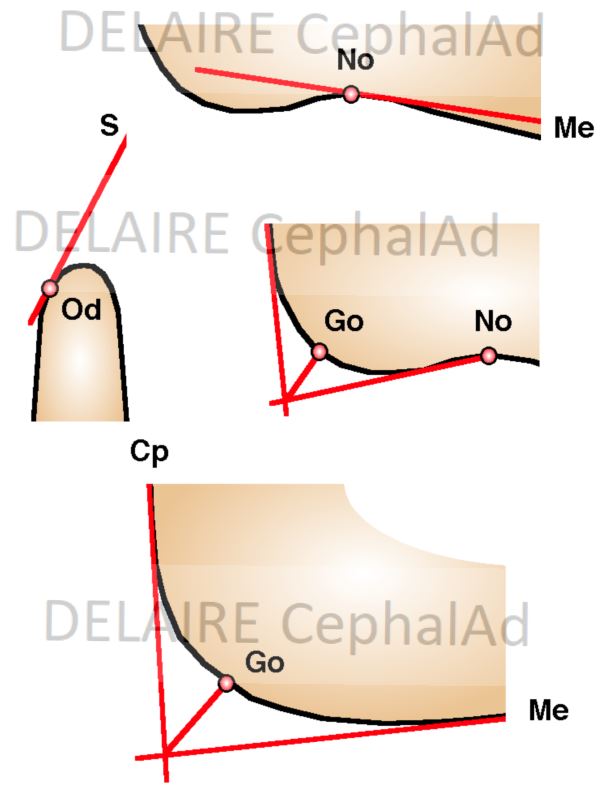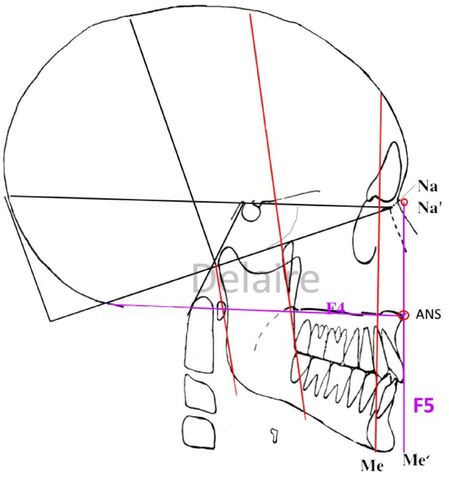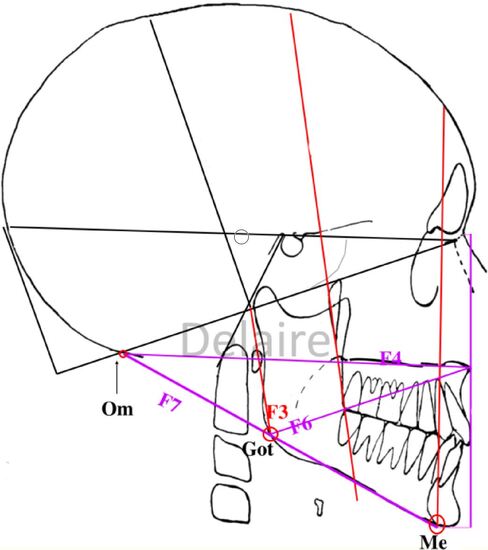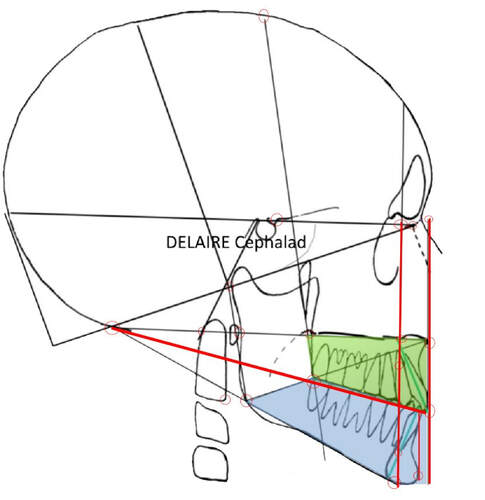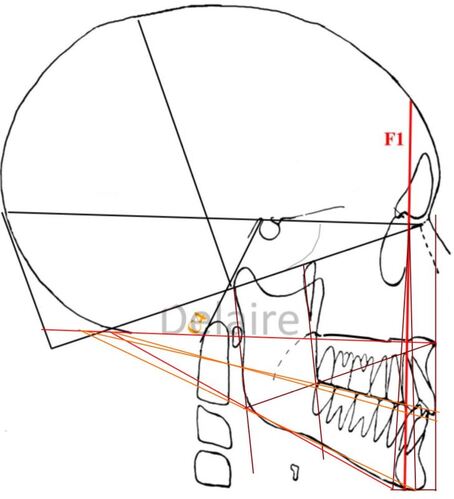MANUAL TRACING
Because of the need to evaluate different balance options in each patient, the Delaire cephalometric analysis is an informatized tool. However it is still possible /necessary to draw it " by hand". Beside its availability, manual drawing remains a pedagogical essential tool. Spending hours in front of a lateral cephalometry carefully marking the landmarks, spending even more time to compare the pre and post op results, are essential to understand the mechanic of the face.
Drawing of the upper baseline of the skull C1
Craniofacial boundary C2
Drawing of the height of the skull C3
Drawing og the basilar slope C4
Drawing of the anterior line of equilibrium of the face F1
Cranio-adapted angle C1-F1 in the orthofrontal subject:
- woman, child = 85° + or - the angular correction,
- adult male = 90° + or - the angular correction.
- the angular correction (or adaptation of cranial factors to the sagittal orientation of F1):
- Cranial factors:
- C1-C2 angle variations,
- C3/C2 reports,
- craniofacial field (CFC)/cranio-spinal field (CRC) ratios,
- C1-C4 angle variations,
- variations in the level of the occipital bone (N = + or - 2 mm).
- variations of the C1-F1 angle in (+) or (-) :
0.50° for 1° of C1-C2,
0.25° for 1° of C1-C4,
0.25° for 2% C3/C2,
0.25° for 1% of RTC,
0.25° for 2 mm from the level of the occipital bone.
(this is done automatically in the drawing software. One can have a first idea by using a 90° angle in male and 85° angle in female and kids.
- woman, child = 85° + or - the angular correction,
- adult male = 90° + or - the angular correction.
- the angular correction (or adaptation of cranial factors to the sagittal orientation of F1):
- Cranial factors:
- C1-C2 angle variations,
- C3/C2 reports,
- craniofacial field (CFC)/cranio-spinal field (CRC) ratios,
- C1-C4 angle variations,
- variations in the level of the occipital bone (N = + or - 2 mm).
- variations of the C1-F1 angle in (+) or (-) :
0.50° for 1° of C1-C2,
0.25° for 1° of C1-C4,
0.25° for 2% C3/C2,
0.25° for 1% of RTC,
0.25° for 2 mm from the level of the occipital bone.
(this is done automatically in the drawing software. One can have a first idea by using a 90° angle in male and 85° angle in female and kids.
Drawing of the mean face balance line F2
Drawing of the posterior line of the face F3
Drawing of the cervico-palatal line F4. Normally Od PNS Np and ANS are on the same level. Il not the best option has to be chosen.
Drawing of the facial height F5, in 1 2 3 mm or even more in front of N...
Draing of the maxillo-ramal line 6.
Drawing of the cranio mandibulare line F7.
Finally drawing of the occlusal line F8. It must cross the soft tissues in the area of the buccal commissure... Otherwise, different option has to be taken into account.
Drawing of the dental lines d1 and d2.
end of section
